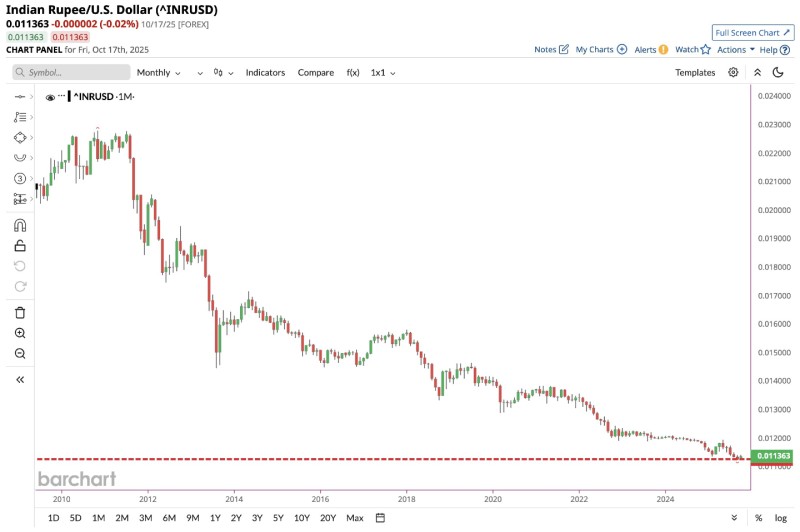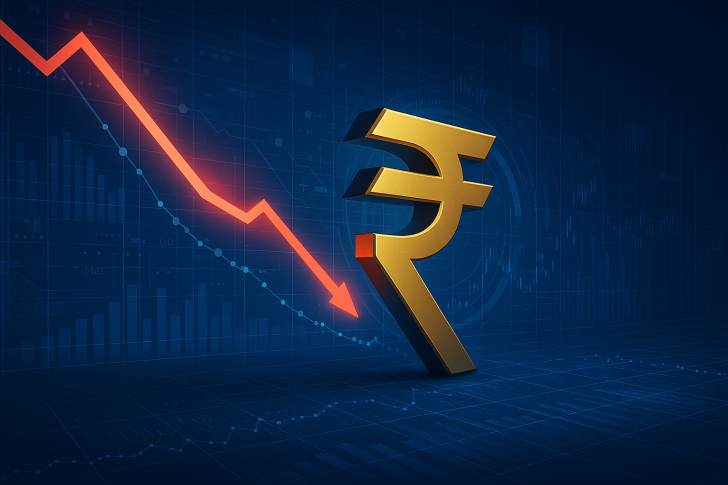The Indian Rupee's prolonged weakness has reached a critical point, with the currency touching an all-time low of 0.01136 against the U.S. Dollar. Market data shows a relentless slide from above 0.024 in 2010 to today's record level, reflecting mounting pressure on emerging market currencies amid a robust dollar cycle.
A Major Milestone in INR/USD Weakness
According to Stock Sharks trader, the pair has tested and slightly broken through its long-term support around the 0.0114 level, marking the Rupee's weakest position in over 15 years.

The monthly chart reveals a firmly bearish pattern with consistent lower highs since 2011 and no meaningful signs of reversal on the horizon.
What's Driving the Decline?
Multiple macroeconomic forces are behind this historic drop:
- India's persistent trade deficit, driven by expensive energy imports
- The Federal Reserve's high interest rate policy strengthening the Dollar Index
- Capital outflows from emerging markets toward U.S. assets
- Domestic inflation and fiscal constraints limiting RBI intervention
While the Reserve Bank of India has stepped in occasionally to prevent sharp drops, these efforts have only slowed the downtrend without reversing it.
Economic Implications
The weaker Rupee cuts both ways. It boosts India's export sectors like software services and manufacturing, making them more competitive globally. However, it also inflates import costs, especially for crude oil and gold, which pushes up consumer prices and complicates the central bank's policy decisions.
Technical analysts are now watching closely as INR/USD hovers near 0.0113. A sustained break below this level could trigger fresh selling pressure, potentially pushing the currency toward 0.0110 in the months ahead.
 Sergey Diakov
Sergey Diakov

 Sergey Diakov
Sergey Diakov

